|
|
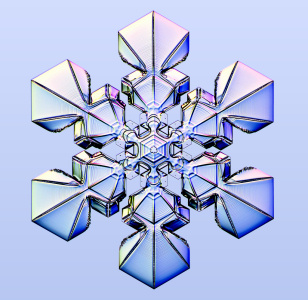
The Little Faces
Snow
crystals often display flat, faceted surfaces, similar to what you see
on a gemstone or with many crystal-glass items. The word facet literally
means “little face,” and the sparkles you see when the sun shines on a
bank of snow are reflections from the countless little faces of ice
crystals. You can also see the mirror-like surfaces of individual snow
crystals when you look at them on your sleeve. As you move a crystal to
and fro, bright reflections reveal the smooth facet surfaces.
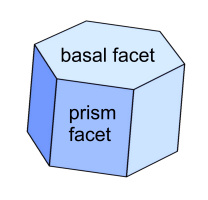 The simplest snowflakes are called hexagonal prisms, like the one shown on the right. These have two basal facets and six prism facets. So where do these facets come from? The simplest snowflakes are called hexagonal prisms, like the one shown on the right. These have two basal facets and six prism facets. So where do these facets come from? |
| 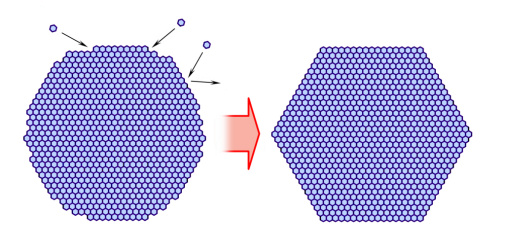
The Origin of Natural Facets
Facets
appear on snow crystals as they grow. Water molecules in the air strike
the crystal surface and stick, but some stick more readily than others.
The water molecules stick especially well to rough spots on the
surface, where there are lots of available chemical bonds. They stick
less well to smooth areas with fewer bonds.
As a result, the
smooth surfaces accumulate material more slowly than rough surfaces.
The rough parts soon fill in, leaving just the smooth, faceted surfaces. |
| 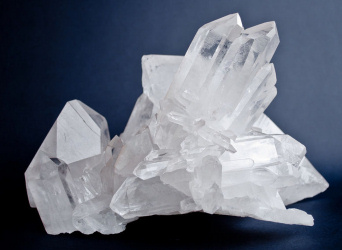 Mineral Facets Mineral Facets
Many
crystalline minerals, such as the quartz specimen shown here, form
natural facets as they grow. The molecular mechanism is basically the
same as for ice -- atoms and molecules stick better on some surfaces
than others.
The geometry of the facets comes from the geometry of the underlying crystal lattice. |
| 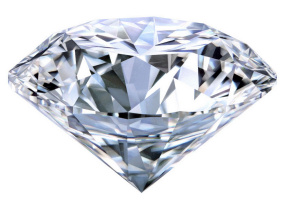
Artificial Facets
The
facets in gemstones are almost invariably artificial, regardless
of the type of stone. The diamonds, emeralds, and rubies you find
in jewelry all sparkle from their artificial facets, which were carved
and polished with a grindstone. The facets on crystal glassware are
also carved or molded into place by the glassworker. These faceted
works of art can be stunning, to be sure, but they do not possess the
natural beauty of the self-faceting snowflake. |
| |
|
|
|
